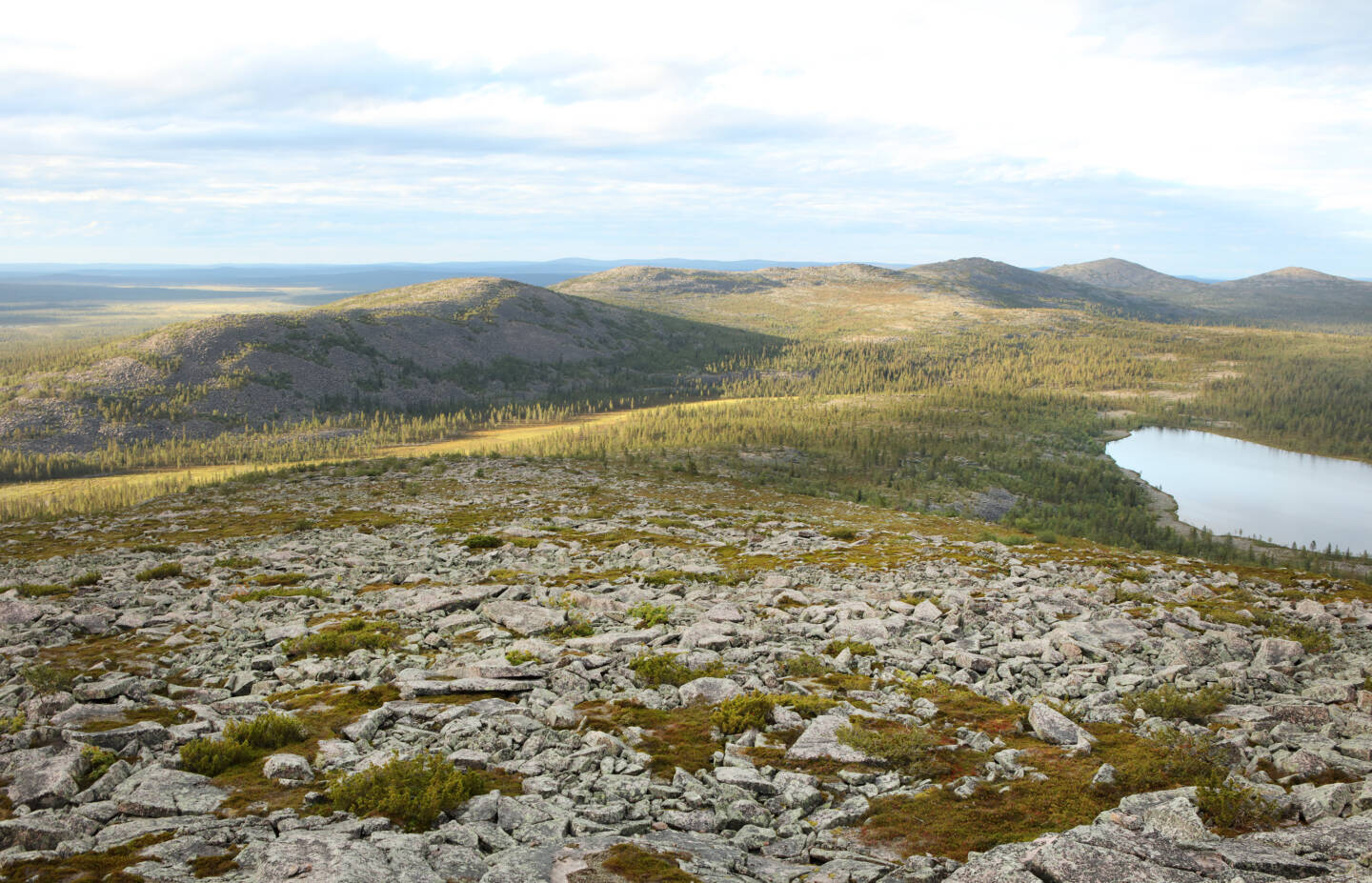
Fells and alpine habitats
Fells are typical habitats of the northern parts of Lapland. The area of the fell region in Finland is approximately 1.7 million hectares, which accounts for about four percent of the total area of Finland and 5.5 percent of the land area. The majority of Finland's fell environments are located in wilderness and conservation areas.
Of Finland's known species, 3.9 percent are found either on the bare fell tops or in the harsh fell woodlands. Of these, up to 35 percent have been classified as endangered.
Fells are characteristic of Lapland’s nature
In the context of this webservice, fell environments refer to the open and semi-open areas of the fell zone. These include fell meadows and heaths, wetlands, and areas with sparse vegetation. Fell environments are primarily located above or north of the tree line. In the set of Luonnontila Indicators, the species of fell birch forests are also considered part of the fell environments.
The fell environments in Finland encompass nearly the entire vegetation zone of Fell Lapland and the largest separate fells. The actual fell area is mainly located in the three northernmost municipalities of Utsjoki, Inari, and Enontekiö, and the fell environments are predominantly situated within the wilderness and protected areas of Lapland. The total area of the fell region in Finland is just over 1.7 million hectares, which corresponds to 3.9 percent of the total area of all habitats.
A large fraction of the species inhabiting fells are endangered
The bare fell tops and fell birch forests are the primary habitats for 3.9 percent of Finland’s known species. Of these, 35 percent are found on various rocky areas, scree, and stone fields; 23 percent on fell heaths; 6.6 percent in fell birch forests; 5.5 percent on mires of the bare fell tops; 5.3 percent on fell meadows; 5 percent on snowbeds; and 3.8 percent in fell water bodies. About 14 percent of the fell species do not have more specifically defined habitats.
Among the species found in the fells, insects, mosses, lichens, and vascular plants are the most abundant. Among insects, butterflies and dipterans (flies and mosquitoes) are the most species-rich groups. Butterflies predominantly live on the fell heaths, while dipterans thrive in the wetlands. Vascular plants are fairly evenly distributed across all habitats, as are mosses, which, however, are absent from fell meadows. Lichens grow exclusively on fell heaths and rocky areas.
Up to over 35 percent of the fell species have been classified as endangered. Particularly, the proportion of critically endangered species is high (7.9 percent of the fell species), and most of these are very rare species of the high fells.